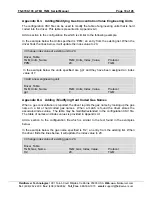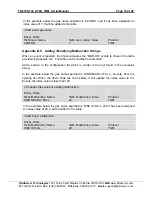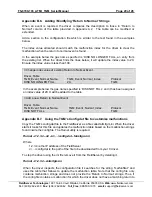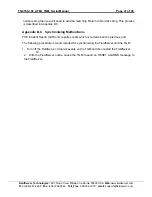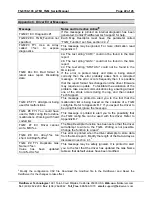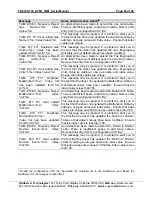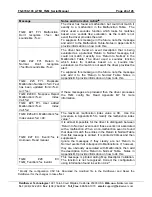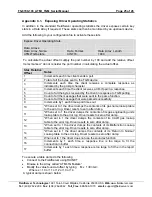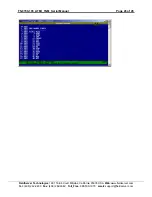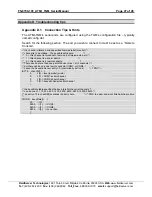
FS-8700-103_ATMI_TGM_Serial
Manual
Page
16
of
28
FieldServer Technologies
1991 Tarob Court Milpitas, California 95035 USA
Web
:www.fieldserver.com
Tel
: (408) 262-2299
Fax
: (408) 262-9042
Toll_Free
: 888-509-1970
: support@fieldserver.com
Appendix B. Advanced Topics
Appendix B.1. How Malfunctions are determined and stored
•
The notes below describe how the driver parses incident reports obtained by the QIR
poll.
•
The driver starts at the end of the report and works its way to the top, line by line.
•
Each line is inspected to see if it contains either of the following strings
“ALARM RESET"
"ALL MALFUNCTIONS CLEAR”
•
If either is reported then the driver sets all the array elements to zero except those
corresponding to lines of the report appearing after (and hence later in time) one of the
above lines that indicates that malfunctions be set, in which case those particular
malfunctions will be reported as 1’s in the Data Array.
•
When either one of these two events is found the driver stops parsing the report as all
prior lines predate the clear event.
•
Each line is inspected for the string “MALFUN”. If it is found then ‘Event’ field in the
report is inspected and the description is extracted and compared to the malfunction list
provided in Appendix A.2. If a match is found the driver uses the offset value and sets
the corresponding element in the Data Array to 1.
•
If the string “MAFUN” is not found then the description found in the ‘Event’ field of the
report is used to look up a ‘Return to Normal’ event in the table provided in Appendix
A.2. If a match is found then the corresponding offset in the Data Array is set to zero.
•
If the description is not recognized then it it is ignored.
Example
Only the Malfunction ‘COUS SENSOR TIMEOUT’ would have its Data Array element set to
1. All others will be set to zero. The reason is that all events above the ‘ALARM RESET’ line
are considered to be prior to the reset and are thus cleared when the driver sets all the Data
Array elements to zero. The timeout event occurs later and hence its malfunction is set.
MALFUN POWER FAILURE 00:00 00 00
POWER RESTORED 10:29 16 FEB 04
MALFUN TGM IN DEBUG MODE 10:29 16 FEB 04
MALFUN FAILED FLAME TEST 10:29 16 FEB 04
ALARM RESET 10:29 16 FEB 04
MALFUN COUS SENSOR TIMEOUT 10:29 16 FEB 04
When the driver uses the lookup table to see if it recognizes the event description then it
compares the strings looking for an exact match. If no exact match is made then the driver
uses a so-called ‘soundex’ function to see if the strings are very similar, if they are then they
are considered to be matched. If a similar match is made the driver reports this in the error
log.
16 T02> TGM:#21 FYI. Malfunction. Dont recognize <POWER FAILED>
17 T02> But sounds like <POWER FAILURE>.

















